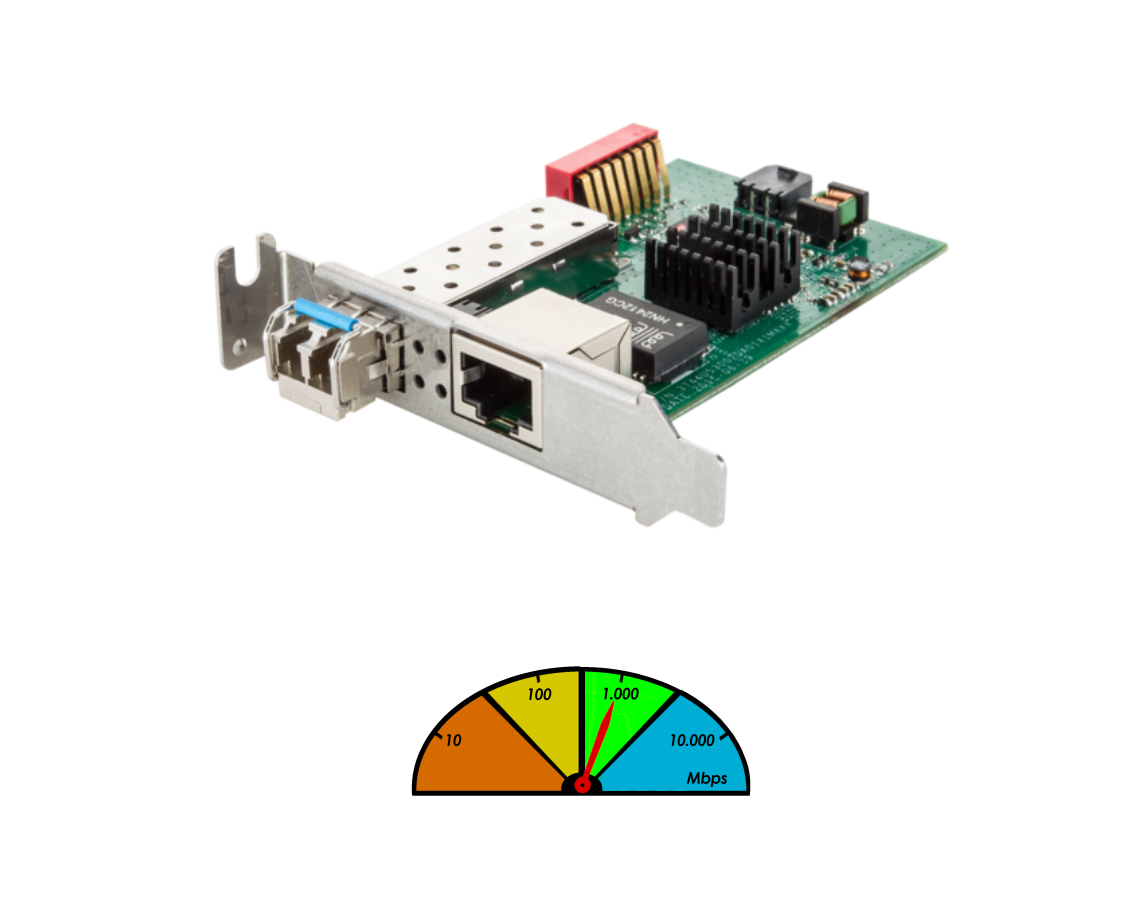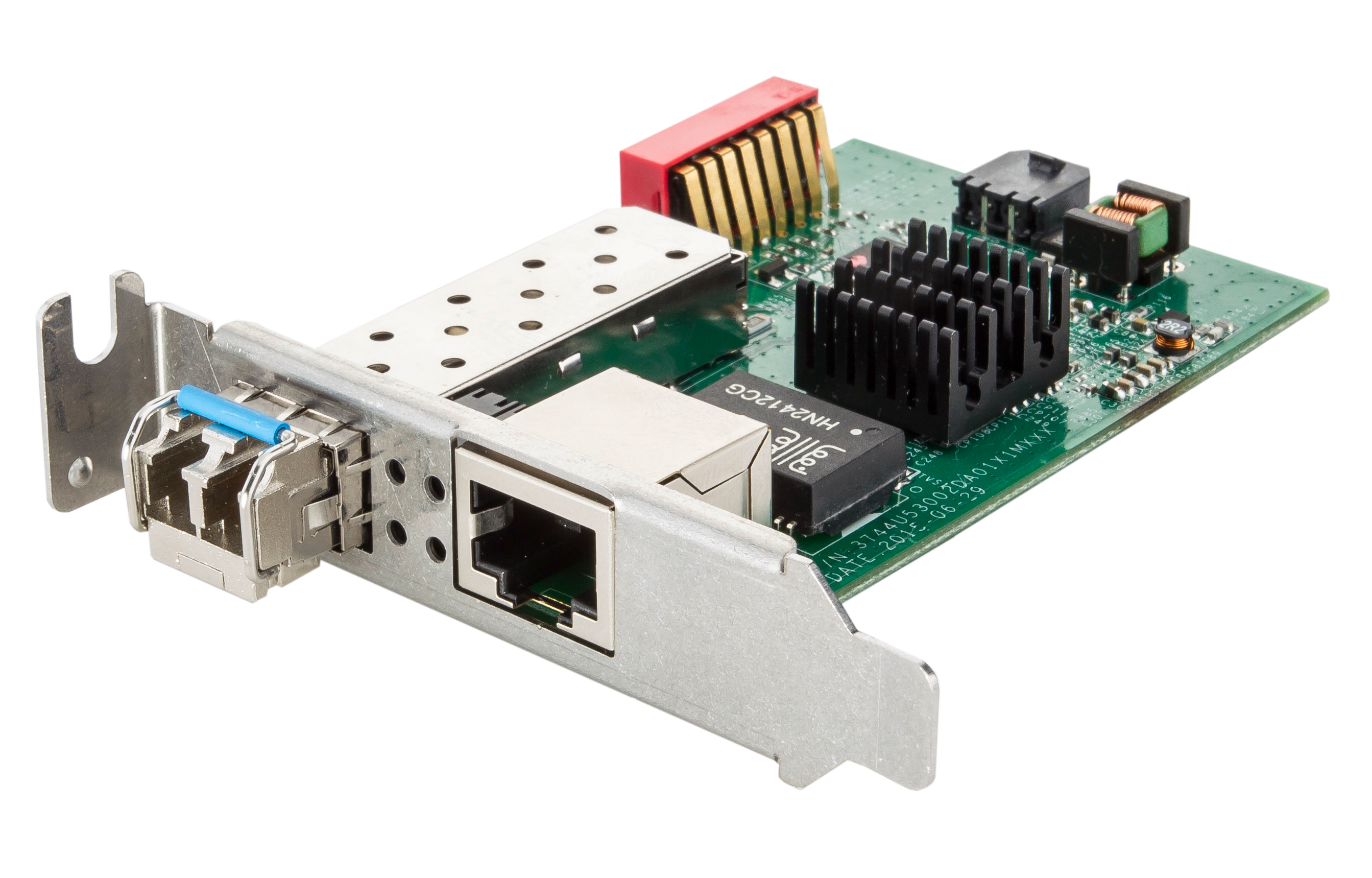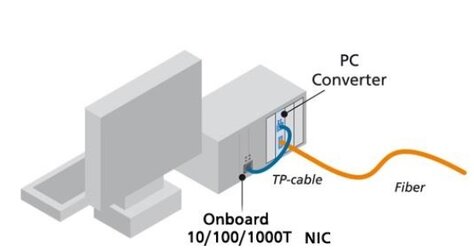The use of special PC network cards with integrated fiber optic was the only way to provide a PC-internal fiber optic interface for connecting computers to existing Fiber to the Desk (FTTD) infrastructures, especially in the 1990s and 2000s.
MICROSENS has developed the PC slot converter in order to minimize the effort, especially during commissioning and the separate installation of driver software for the fiber optic network cards.
Compared to the fiber optic network card, the PC slot converter is characterized by the simple and driver-free installation and connection of fiber optic to a standard PC, independent of the slot profiles used in the PC (standard profile / low profile). The onboard network card with copper connection, which is already provided in the PC and anchored in the operating system, is still used. The PC slot converter is simply connected to the network card via a short copper cable and thus provides the ideal conversion of the fiber optic medium to copper.
Compared to the converter in desktop design, (which is often used for media conversion and is then usually supplied with 230VAC in the office via a socket located behind the PC on the floor), the PC slot converter has the advantage that it receives the operating voltage of 5 VDC from the internal PC power supply. Therefore it does not require a separate power supply. The standard power supply is realized via USB, an adapter cable also allows a 12V tap via Y-cable. A built-in DIP switch allows versatile setting options such as the selection of the transmission speed, auto negotiation or the link through function.
The fiber optic connection is made via a fixed fiber optic (optionally SC/ST multimode or SC singlemode). The interface supports Fast Ethernet (100 MBit/s) and MICROSENS also has a Gigabit counterpart with SFP slot on the fiber optic side.




















